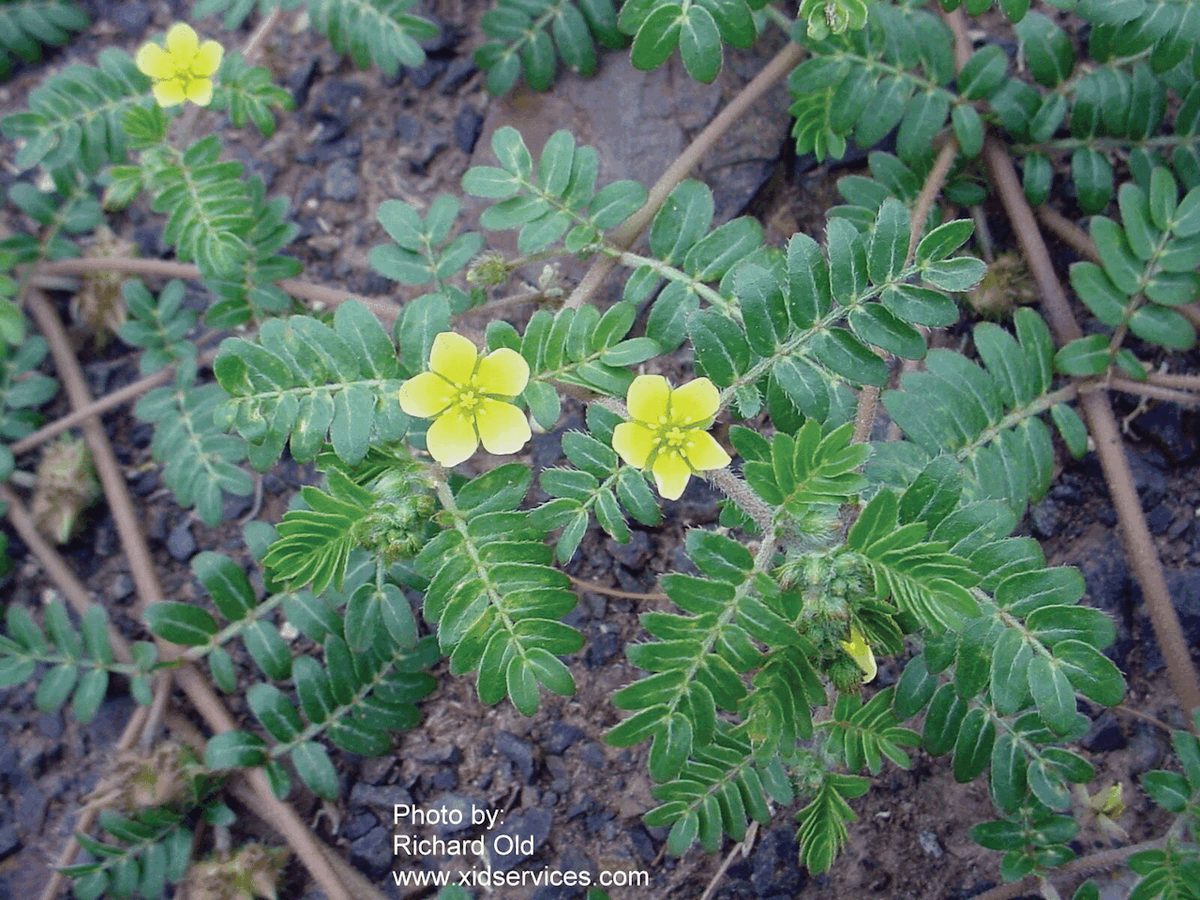The Columbia County Weed Board, located in the County Extension Office, provides information and resources concerning weeds within Columbia County. Regular board meetings are the third Tuesday of the month, March-October, and the third Thursday of the month at November-February. Regular board meetings are held at 139 East Main Street, Dayton WA 99328. Board meetings are not held during the months of July and August.
Weed Board Coordinator, Naedene Shearer
Board Members include:
- Josh Bowen, Chairman
- Clayton McKinley, Vice Chairman
- Bill Warren, Secretary
- Rick Turner, Director
- Matt Talbott, Director
WHITE BRYONY

This Class B Noxious weed is a perennial vine that is prevalent in riparian areas, disturbed areas, and roadsides. The vines grow over and blanket other plants. It covers trees, bushes, and fence lines. In an area where there is nothing to climb, it will form dense mats shading out all other vegetation. It thrives in shade. Although all parts of the plant are poisonous to humans and animals, the black berries are especially poisonous.
White Bryony reproduces by seed. Plants may also re-sprout from roots. Control efforts may take several years. The most effective control method is digging and cutting off the top crown of the root as chemical control options may adversely affect the host plant.
For more information on White Bryony, be sure to check out the Washington State Weed Board page at:
https://www.nwcb.wa.gov/weeds/white-bryony
The fact sheet below published by Franklin County is especially informative:
White Bryony Options for Control-Franklin County
Poison Hemlock

Poison hemlock can be deadly toxic to both people and animals. This toxic, noxious weed is thick around Columbia County and is still young and the leaves are at a basal rosette stage which is the best time to treat poison hemlock.
Poison hemlock is an invasive species that rapidly colonizes streambanks, vacant lots, roadsides, pastures, and meadows, especially where the soil is moist, out competing native plants and desirable species. It is a biennial plant, which means that it typically lives for two years. The first year it forms a basal rosette of leaves. The second year, it develops flowering stems and produces about a thousand seeds per plant.
Small patches of poison hemlock can be carefully dug up, making sure to remove the taproot. Always wear protective clothing and gloves to prevent accidental exposure to the plant’s toxic juices. Do not cut or mow the plants as they will only resprout. Dispose of plants in the trash. Toxins will remain potent in dried plant material. Never put pulled plants in the compost or leave them where livestock might eat them. There are a number of herbicides available for controlling poison hemlock in larger infestations. Always read and follow the label instructions before applying any herbicide product.
Plant grasses and other desirable vegetation to provide competition and help prevent further weed establishment at the site.
For additional information, contact the Columbia County Noxious Weed Board.
Information and photo: WA State Noxious Weed Control Board http://www.nwcb.wa.gov
Mediterranean Sage
Mediterranean sage is a designated as a Class A weed by the Washington State Noxious Weed Control Board. It is an aggressive species that is not palatable and out-competes desirable forage plants in dry pastures and range-lands. Mediterranean sage reproduces by seed and acts like a tumbleweed to disperse its seeds.
The Columbia County Weed Board offers a cost share program for the control of Mediterranean sage in Columbia County.

Mediterranean Sage in full bloom
Cost sharing for Class “B” Weeds
The Weed Board offers cost sharing for two other Class B weeds other than Yellow Starthistle. Those weeds are Japanese/Bohemian Knotweed and Leafy Spurge.


The Weed Board will make the final determination as to the amount of chemical reimbursement and may issue up to the following:
- 100% of herbicide cost the first treatment year.
- 75% of herbicide cost where treatment is needed the second season.
- In year 3 and following years, herbicide cost share will be evaluated on a case by case basis.
- Owners/operator is responsible for 100% of application costs.
2024 Meeting Dates
January 18, 2024 12:00 noon
February 15, 2024 12:00 noon
March 19, 2024 7:00 pm
April 16, 2024 7:00 pm
May 21, 2024 7:00 pm
June 18, 2024 7:00 pm
July- no meeting
August-no meeting
Sept 17, 2024 7:00 pm
Oct 15 2024 7:00 pm
Nov 19, 2024 noon
Dec 17, 2024 noon
Noxious Weed Disposal
When controlling weeds, proper disposal is very important. Depending on the plant species, growth stage, and quantity, disposal methods can vary.
In general, if plants are flowering, cut and bag flowers when possible to prevent seed development and dispersal. Seal bags and put them in the trash. If plants are NOT flowering and do not spread vegetatively, the plants may be able to be pulled up by the roots and left on the ground to dry out.
Check out this publication for all the specifics about how to dispose of noxious weeds.
https://www.nwcb.wa.gov/pdfs/Noxious_weed_disposal_2012-1.pdf

Not sure what kind of plant you have? Call or stop by the office to have the weed identified before you begin to control it. Identifying the weed will insure that you are disposing of the weed correctly.
Puncturevine
Puncturevine is a toxic plant and a serious weed in pastures, roadsides, waste places and cultivated fields. The spines of the fruit can cause damage to animals and people. It’s sharp spines can puncture bicycle tires and shoes. While typically not grazed, puncturevine is toxic to livestock, especially sheep, when consumed in quantity. It’s also a painful problem to the fruit pickers when growing in orchards or vineyards.
Puncturevine is a summer annual herb growing flat along the ground, from a simple, woody taproot. The fruit is a woody burr with sharp, rigid spines (strong enough to puncture bicycle tires or penetrate shoe soles).
The small, yellow flowers are borne on short stalks at leaf nodes. Flowers are solitary and have 5 petals, 5 sepals and 10 stamens.
Leaves are opposite, oblong and have short stalks. They are 1 to 3 inches long, hairy, and pinnately compound (having leaflets). Each leaflet is 1/4 inch long.
Stems are numerous, hairy, and up to 6 feet long. They form a dense mat.
The fruit is a woody burr with sharp, rigid spines. Burrs break apart into 5 sections, which some say each resemble a goat’s head.
Puncturevine is found in pastures, roadsides, waste places, parks, agricultural areas. Puncturevine reproduces by seed, which typically germinate from April to October, depending on conditions. Seeds commonly germinate after rainfall or irrigation. Seed production per plant typically ranges from 200 to 5,000 seeds or in some conditions up to as many as 100,000.
Puncturevine spreads by seed so controlling plants prior to seed production is critical to prevent further seed entering the seedbank. When working in puncturevine infestations, make sure to clean shoes, clothing and tires to prevent spreading seeds to other areas. Use any of these, or a combination of these methods to control puncturevine. After puncturevine control, plant areas with site appropriate plants to provide competition and reduce further puncturevine invasion.
Puncturevine can be hand-pulled or controlled by hoeing or digging up, ideally prior to seed formation in the spring. If plants have already produced seeds, make sure to remove all possible spiny burrs from the ground. Make sure to wear gloves when removing puncturevine and be careful of the sharp spines. Shallow tilling, 1 inch or less, can also be used on small plants in the spring to control the plant prior to flower and seed development. Tilling deeper in the soil may just bury that will survive longer. All methods will need to be repeated as new seeds germinate during the year and for at least four years due to seed viability. Continue to monitor and control as needed. Mowing is ineffective due to the plant’s low growth form.
The puncturevine seed weevil, Microlarinus lareynii, and the puncturevine stem weevil, Microlarinus lypriformis are two biocontrol agents that have been researched and approved for the biological control of puncturevine. Unfortunately, these biocontrol agents do not provide effective control in Washington State. For more information about the biological control of puncturevine and other noxious weeds, please visit WSU Extension Integrated Weed Control Project.
Appropriate herbicide use can provide effective control of puncturevine. After the plants have emerged from the soil, and before the plants develop seeds, postemergent products are effective. The smaller or younger the plant, the better the postemergent herbicides work. Make sure to treat plants before they develop seeds. When choosing a soil applied chemical for puncturevine control, consider whether a selective or non-selective product is needed. Always read the label instructions before applying any herbicides for proper rate and timing. Use chemicals that are compatible with your goals. Please refer to the PNW Weed Management Handbook and contact your county weed coordinator for recommendations.
Picture and Information from Washington State Noxious Weed Board Website.
[/section]
